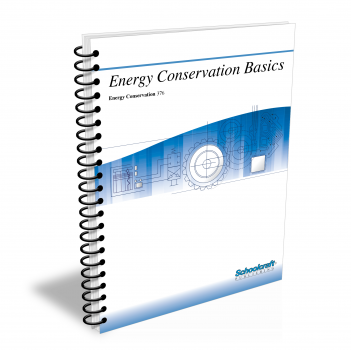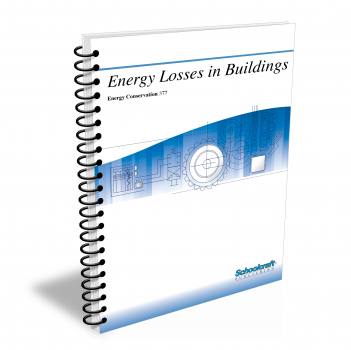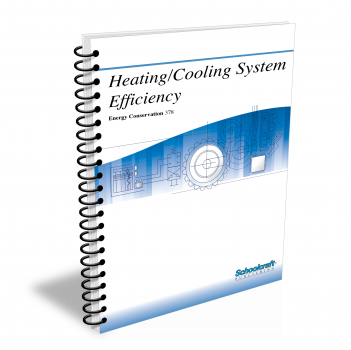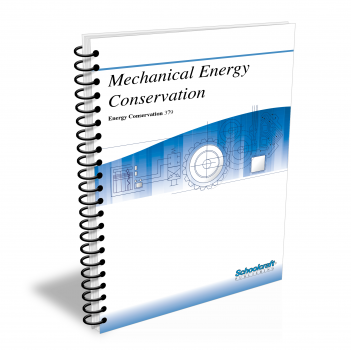Electrical Energy Conservation
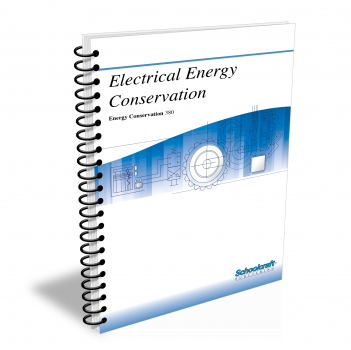
Course Number: 380
The Electrical Energy Conservation textbook covers electrical energy consumers in typical commercial and industrial facilities. It investigates utility rate structures and relates cost to load management, and examines power factors, including how they are calculated and how they affect energy usage. The textbook shows methods of conducting lighting surveys and how lighting fixture and lamp selection can impact electricity costs.
Does your curriculum require additional topics not included in this textbook? Build a customized version of the Electrical Energy Conservation textbook below.
Recommended Contact Hours – 10
Preview a Chapter
Available Supporting Material
- Table of Contents
- Exam Copies
- Suggested Titles
Table of Contents
Chapter 1: Surveying Electrical Consumption
Topics: Identifying electricity consumers; Determining system efficiency, consumption; Meter selection
Learning Objectives:
- Conduct an electrical energy audit.
- Determine the efficiency of an electrical system.
- Give three reasons for metering electric energy use.
- Name the three basic types of meters used in energy conservation work and explain how each is used.
- Differentiate between indicating and recording meters.
Chapter 2: Using Load Management Techniques
Topics: Load factor; Equipment audits; Target demand; Methods of control; Demand controllers
Learning Objectives:
- Name the two metered quantities that determine the major part of an electric bill.
- Define power factor and load factor and explain why each is important.
- Show how to use meters to identify usage patterns ad peak usage periods.
- Compare and contrast manual and automatic demand control and give an example of each.
- Name several types of demand controllers and tell how each operates.
- Describe the way in which electric bills are calculated.
Chapter 3: Improving Electrical Equipment Efficiency
Topics: Electrical quantities; Capacitors; Induction motors; Motor efficiency; Variable speed drives; Transformers; Energy saving devices
Learning Objectives:
- Name the two familiar forms energy may take.
- List three elements of impedance in an ac system.
- Explain how power factor is calculated in a single-phase and a three-phase circuit.
- Tell why capacitors are important from an energy conservation standpoint and name three sources of capacitance in an electrical system.
- Explain the information found on a motor nameplate and tell how it relates to energy on a electrical system.
- Calculate load losses and no-load losses of motors, speed controls, and transformers.
- Evaluate the value of energy-saving devices.
Chapter 4: Conducting a Lighting Survey
Topics: Lighting levels; Lighting survey; Improved switching; Reducing lamp size; Improved lighting controls; Task lighting; Using natural light
Learning Objectives:
- Explain the importance of a good lighting system.
- Define uniform lighting and selective task lighting and tell how they affect energy consumption.
- Determine recommended and actual lighting levels
- Distinguish between lumens and footcandles as measures of light.
- Give examples of ways in which switching modifications can be used to reduce energy consumption.
- Describe several ways to use natural lighting more efficiently.
Chapter 5: Evaluating Lamps and Fixtures
Topics: Incandescent and fluorescent lamps; Scheduling lamp replacement; HID, mercury, metal halide, high-, and low-pressure sodium lamps; Maintenance
Learning Objectives:
- Tell why cleaning lamps and fixtures is important.
- Compare and contrast incandescent and fluorescent lamps.
- Differentiate between R lamps and ER lamps.
- Name six types of lighting in order of efficacy.
- List advantages and disadvantages of each of the following types of high intensity discharge lighting: mercury, metal halide, HPS, and LPS.
Request Exam Copies
Exam Copies
Ready to see a copy of our textbooks? After selecting which textbooks you’d like to review for your course, you can submit your request by either logging in or creating an account so we know where to ship your exam copies. A representative from Schoolcraft will contact you to confirm and finish processing your request.
Exam copies are always free and yours to keep.
Selected Exam Copies
none selected
* Maximum of five copies can be ordered
